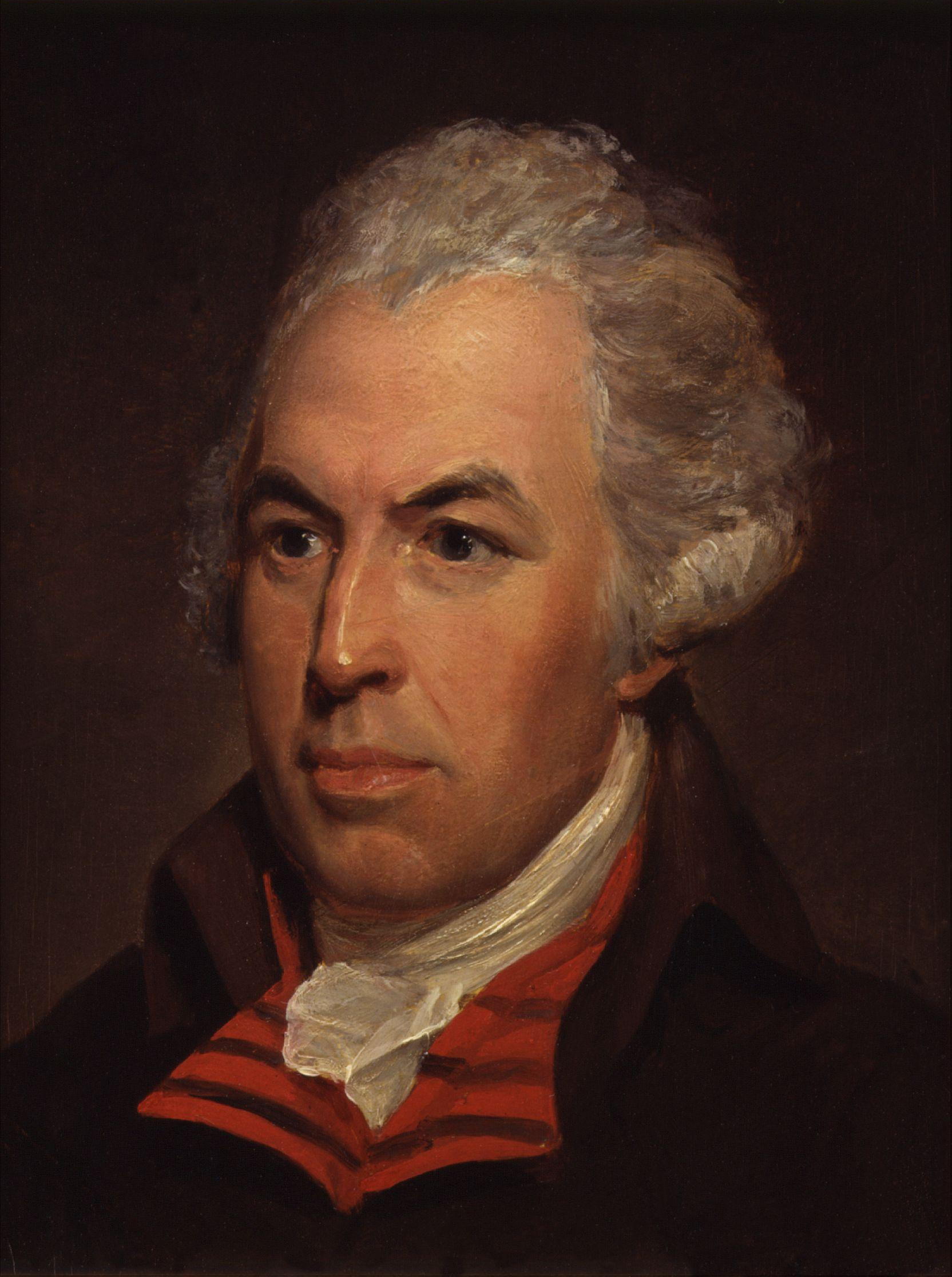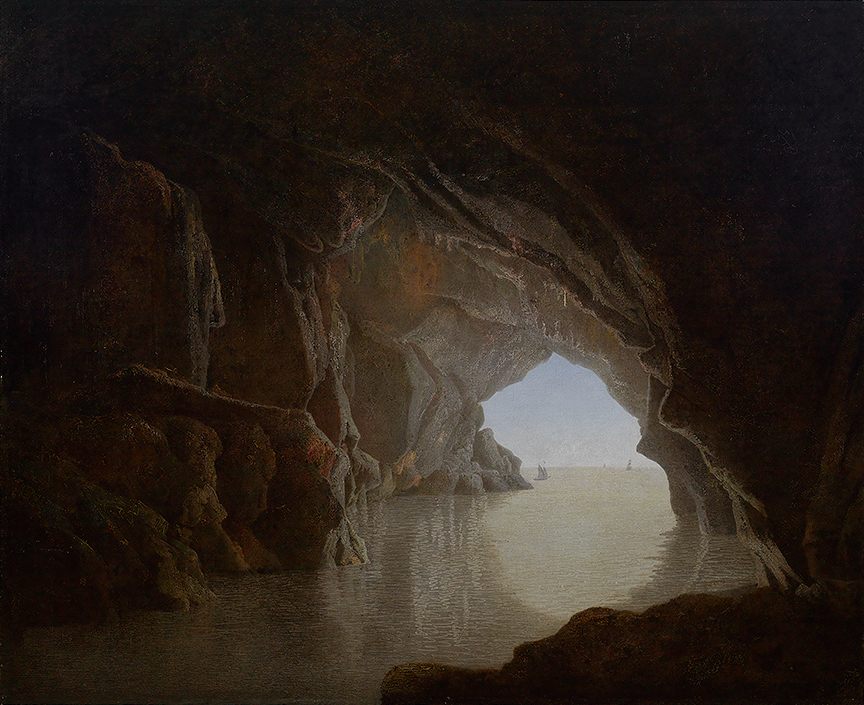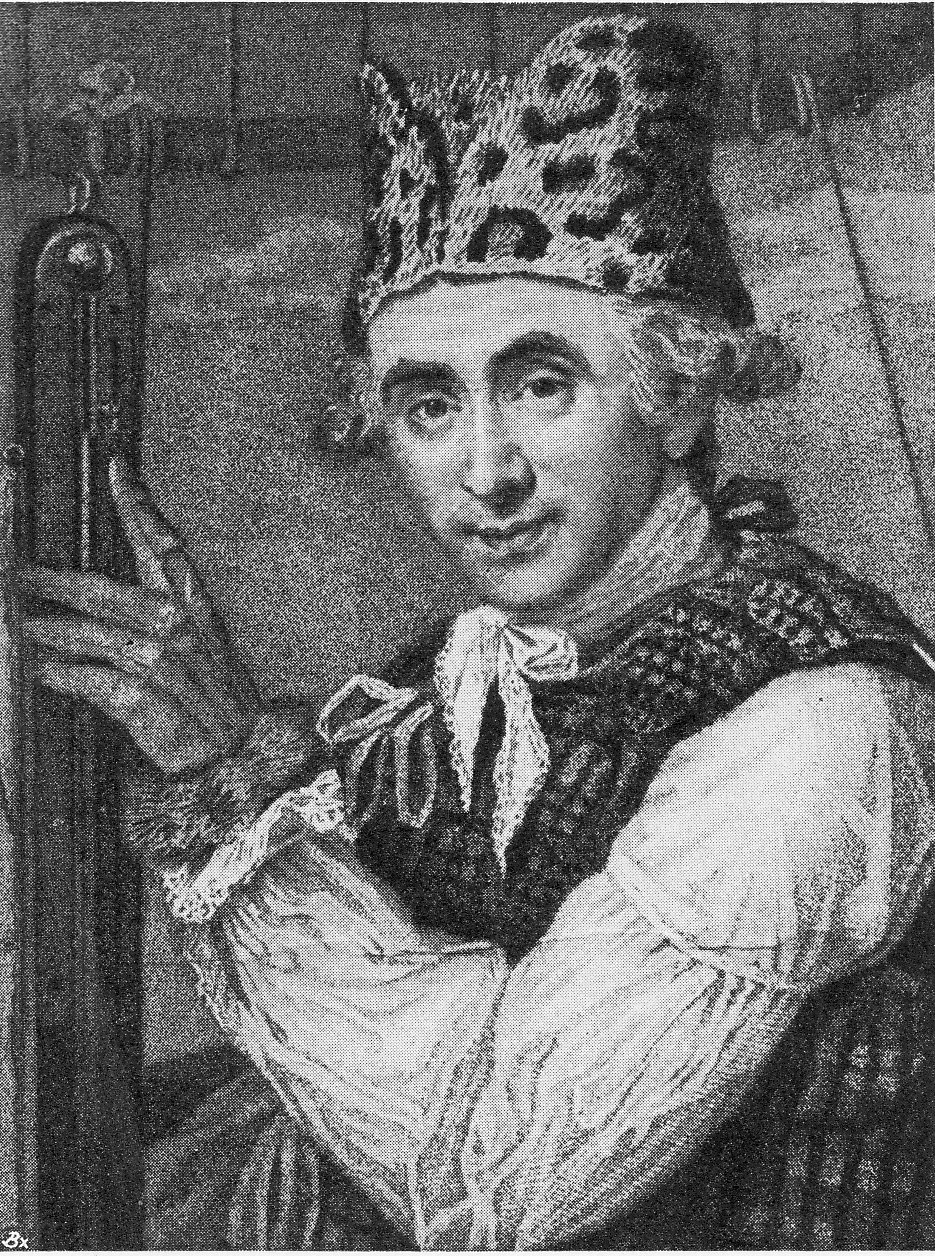|
Thomas Alphonso Hayley
Thomas Alphonso Hayley (5 October 1780 – 2 May 1800) was an English sculptor. Life Hayley, the natural son of William Hayley, was born in 1780, and showed in 1794 signs of a love for sculpture. He was encouraged to learn drawing by Joseph Wright of Derby, and having attracted the attention of the painter George Romney, and of John Flaxman, was in 1795 articled to Flaxman as a resident pupil for three years. He appears to have shown much promise, even experimenting in oil-painting. In 1798, however, he showed symptoms of ill-health, arising from curvature of the spine, and was compelled to return to his father's cottage at Felpham in Sussex, where, after two years of suffering, he died on 2 May 1800. He was buried nearby at Eartham; his monument there was carved and erected by Flaxman, with an epitaph composed by his father. Hayley modelled busts of Flaxman, Lord Thurlow, and James Stanier Clarke. A medallion by him of Romney was engraved by Caroline Watson for his father's ''L ... [...More Info...] [...Related Items...] OR: [Wikipedia] [Google] [Baidu] |
William Blake - Thomas Alphonso Hayley, Half-Length Drawing - Google Art Project
William is a male given name of Germanic origin.Hanks, Hardcastle and Hodges, ''Oxford Dictionary of First Names'', Oxford University Press, 2nd edition, , p. 276. It became very popular in the English language after the Norman conquest of England in 1066,All Things William"Meaning & Origin of the Name"/ref> and remained so throughout the Middle Ages and into the modern era. It is sometimes abbreviated "Wm." Shortened familiar versions in English include Will, Wills, Willy, Willie, Bill, and Billy. A common Irish form is Liam. Scottish diminutives include Wull, Willie or Wullie (as in Oor Wullie or the play ''Douglas''). Female forms are Willa, Willemina, Wilma and Wilhelmina. Etymology William is related to the given name ''Wilhelm'' (cf. Proto-Germanic ᚹᛁᛚᛃᚨᚺᛖᛚᛗᚨᛉ, ''*Wiljahelmaz'' > German ''Wilhelm'' and Old Norse ᚢᛁᛚᛋᛅᚼᛅᛚᛘᛅᛋ, ''Vilhjálmr''). By regular sound changes, the native, inherited English form of the name shoul ... [...More Info...] [...Related Items...] OR: [Wikipedia] [Google] [Baidu] |
William Hayley
William Hayley (9 November 174512 November 1820) was an English writer, best known as the biographer of his friend William Cowper. Biography Born at Chichester, he was sent to Eton College, Eton in 1757, and to Trinity Hall, Cambridge, in 1762; his connection with the Middle Temple, London, where he was admitted in 1766, was merely nominal. In 1767 he left Cambridge and went to live in London. His private means enabled Hayley to live on his patrimonial estate at Eartham, Sussex, and he retired there in 1774. The location of this house in Eartham is now occupied by the Great Ballard School. So great was Hayley's fame that on Thomas Warton's death in 1790 he was offered the Poet Laureate, laureateship, which he refused. In 1792, while writing the ''Life'' of John Milton, Milton, Hayley made Cowper's acquaintance. A warm friendship sprang up between the two which lasted till Cowper's death in 1800. Hayley indeed was mainly instrumental in getting Cowper his pension. In 1800 Hayle ... [...More Info...] [...Related Items...] OR: [Wikipedia] [Google] [Baidu] |
Joseph Wright Of Derby
Joseph Wright (3 September 1734 – 29 August 1797), styled Joseph Wright of Derby, was an English landscape and portrait painter. He has been acclaimed as "the first professional painter to express the spirit of the Industrial Revolution". Wright is notable for his use of tenebrism, an exaggerated form of the better known chiaroscuro effect, which emphasizes the contrast of light and dark, and for his paintings of candle-lit subjects. His paintings of the birth of science out of alchemy, often based on the meetings of the Lunar Society of Birmingham, a group of scientists and industrialists living in the English Midlands, are a significant record of the struggle of science against religious values in the period known as the Age of Enlightenment. Many of Wright's paintings and drawings are owned by Derby City Council, and are on display at the Derby Museum and Art Gallery. Life Joseph Wright was born in Irongate, Derby, to a respectable family of lawyers. He was the third ... [...More Info...] [...Related Items...] OR: [Wikipedia] [Google] [Baidu] |
George Romney (painter)
George Romney ( – 15 November 1802) was an English portrait painter. He was the most fashionable artist of his day, painting many leading society figures – including his artistic muse, Emma Hamilton, mistress of Lord Nelson. Early life and training Romney was born in Beckside in Dalton-in-Furness, Lancashire (now in Cumbria), the 3rd son (of 11 children) of John Romney, cabinet maker, and Anne Simpson. Raised in a cottage named High Cocken in modern-day Barrow-in-Furness, he was sent to school at nearby Dendron. He appears to have been an indifferent student and was withdrawn at the age of 11 and apprenticed to his father's business instead. He proved to have a natural ability for drawing and making things from wood – including violins (which he played throughout his life). From the age of 15, he was taught art informally by a local watchmaker called John Williamson, but his studies began in earnest in 1755, when he went to Kendal, at the age of 21, for a 4-year appr ... [...More Info...] [...Related Items...] OR: [Wikipedia] [Google] [Baidu] |
John Flaxman
John Flaxman (6 July 1755 – 7 December 1826) was a British sculptor and draughtsman, and a leading figure in British and European Neoclassicism. Early in his career, he worked as a modeller for Josiah Wedgwood's pottery. He spent several years in Rome, where he produced his first book illustrations. He was a prolific maker of funerary monuments. Early life and education He was born in York. His father, also named John (1726–1803), was well known as a moulder and seller of plaster casts at the sign of the Golden Head, New Street, Covent Garden, London. His wife's maiden name was Lee, and they had two children, William and John. Within six months of John's birth, the family returned to London. He was a sickly child, high-shouldered, with a head too large for his body. His mother died when he was nine, and his father remarried. He had little schooling and was largely self-educated. He took delight in drawing and modelling from his father's stock-in-trade, and studied translat ... [...More Info...] [...Related Items...] OR: [Wikipedia] [Google] [Baidu] |
Felpham
Felpham (, sometimes pronounced locally as ''Felf-fm'') is a village and civil parish in the Arun District of West Sussex, England. Although sometimes considered part of the urban area of greater Bognor Regis, it is a village and civil parish in its own right, having an area of 4.26 km2 with a population of 9,611 people that is still growing (2001 census). The population at the 2011 Census was 9,746. Felpham lies on the B2259 coastal road. The 12th century Anglican parish church is dedicated to the Virgin Mary. There is also a Methodist church close to the three-way junction of Felpham Way, Flansham Lane and Middleton Road, in the east of the village. History Felpham is mentioned in a charter of 953 by which King Eadred granted thirty hides of land there to his mother Queen Eadgifu. It was mentioned in the Domesday Book of the 11th century, under the hundred of Binstead: "St Edward's Abbey haftesburyholds and held Felpham before 1066..." Its value before 1066 was said ... [...More Info...] [...Related Items...] OR: [Wikipedia] [Google] [Baidu] |
Eartham
Eartham is a village and civil parish in the District of Chichester in West Sussex, England located north east of Chichester east of the A285 road. There is an Anglican parish church dedicated to St Margaret and a public house, The George, formerly The George and Dragon. The adjoining Manor Farm is the centre of a large farming enterprise. Nearby is Eartham House designed by Sir Edwin Lutyens which has been used since the 1920s as a private preparatory (junior) school, Great Ballard School. Eartham Wood to the north is an area of open access woodland, mostly beech trees through which the Roman road Stane Street runs. The route here today is followed only by bridleways and footpaths, and within Eartham Wood is part of the Monarch's Way long-distance path. The parish has a land area of 836 hectares (2066 acres). In the 2001 census 104 people lived in 42 households, of whom 48 were economically active. At the 2011 Census the population including the hamlet of Upwaltham ... [...More Info...] [...Related Items...] OR: [Wikipedia] [Google] [Baidu] |
Edward Thurlow, 1st Baron Thurlow
Edward Thurlow, 1st Baron Thurlow, PC, KC (9 December 1731 – 12 September 1806), was a British lawyer and Tory politician who sat in the House of Commons from 1765 to 1778 when he was raised to the peerage as Baron Thurlow. He served as Lord High Chancellor of Great Britain for fourteen years and under four Prime Ministers. Early life Born at Bracon Ash, Norfolk, Thurlow was the eldest son of Reverend Thomas Thurlow. Thomas Thurlow, Bishop of Durham, was his brother. He studied at King's School, Canterbury and at Caius College, Cambridge. However, he was forced to leave Cambridge in 1751 without a degree after coming into conflict with the authorities of the university. He was for some time articled to a solicitor in Lincoln's Inn, but in 1754 he was called to the Bar, Inner Temple. After a slow start, Thurlow eventually established a successful legal practice. He was made a King's Counsel in 1761 and was elected a bencher of the Inner Temple in 1762. Political caree ... [...More Info...] [...Related Items...] OR: [Wikipedia] [Google] [Baidu] |
James Stanier Clarke
James Stanier Clarke (1766–1834) was an English cleric, naval author and man of letters. He became librarian in 1799 to George, Prince of Wales (later Prince Regent, then George IV). Early life The eldest son of Edward Clarke and Anne Grenfield, and brother of Edward Daniel Clarke, he was born on 17 December 1766 at Mahon, Minorca where his father was at the time chaplain to the governor. He was educated at Uckfield School and then at Tonbridge School under Vicesimus Knox. Matriculating at St John's College, Cambridge in 1784, he did not complete a first degree. Having taken holy orders, Clarke was in 1790 appointed to the rectory of Preston, Sussex. About the beginning of 1791 he was living in Sussex with his mother, taking in the refugee Anthony Charles Cazenove for half a year. In 1792 he was living at Eartham with William Hayley; Thomas Alphonso Hayley made a bust of him. Courtier Clarke in February 1795 entered the Royal Navy as a chaplain; and served, 1796–99, on ... [...More Info...] [...Related Items...] OR: [Wikipedia] [Google] [Baidu] |
Caroline Watson
Caroline Watson (1761?–1814) was an English stipple engraver. Life The daughter of the Irish engraver James Watson (engraver), James Watson, she was born in London in 1760 or 1761, and studied under her father, who worked in mezzotint. She was known for her skilled worked in the stipple method, was particularly known for reproductions of miniatures, and was the only woman engraver to serve as an independent engraver in the British 18th century. She came to prominence as an engraver at about the same time as women began to make up a significant proportion print consumers. Her career began to wind down after 1810 due to ill health, and she died at Pimlico on 10 June 1814. Works Watson's plates were numerous. In 1784 she engraved a portrait of Prince William Henry, Duke of Gloucester and Edinburgh, Prince William of Gloucester, after Joshua Reynolds, and in 1785 a pair of small plates of the Princesses Sophia and Mary, after John Hoppner, which she dedicated to Charlotte of Meckle ... [...More Info...] [...Related Items...] OR: [Wikipedia] [Google] [Baidu] |
William Blake
William Blake (28 November 1757 – 12 August 1827) was an English poet, painter, and printmaker. Largely unrecognised during his life, Blake is now considered a seminal figure in the history of the poetry and visual art of the Romantic Age. What he called his " prophetic works" were said by 20th-century critic Northrop Frye to form "what is in proportion to its merits the least read body of poetry in the English language". His visual artistry led 21st-century critic Jonathan Jones to proclaim him "far and away the greatest artist Britain has ever produced". In 2002, Blake was placed at number 38 in the BBC's poll of the 100 Greatest Britons. While he lived in London his entire life, except for three years spent in Felpham, he produced a diverse and symbolically rich collection of works, which embraced the imagination as "the body of God" or "human existence itself". Although Blake was considered mad by contemporaries for his idiosyncratic views, he is held in high regard b ... [...More Info...] [...Related Items...] OR: [Wikipedia] [Google] [Baidu] |
1780 Births
Year 178 ( CLXXVIII) was a common year starting on Wednesday (link will display the full calendar) of the Julian calendar. At the time, it was known as the Year of the Consulship of Scipio and Rufus (or, less frequently, year 931 ''Ab urbe condita''). The denomination 178 for this year has been used since the early medieval period, when the Anno Domini calendar era became the prevalent method in Europe for naming years. Events By place Roman Empire * Bruttia Crispina marries Commodus, and receives the title of '' Augusta''. * Emperor Marcus Aurelius and his son Commodus arrive at Carnuntum in Pannonia, and travel to the Danube to fight against the Marcomanni. Asia * Last (7th) year of ''Xiping'' era and start of ''Guanghe'' era of the Chinese Han Dynasty. * In India, the decline of the Kushan Empire begins. The Sassanides take over Central Asia. Religion * The Montanist heresy is condemned for the first time. Births * Lü Meng, Chinese general (d. 220) * Pen ... [...More Info...] [...Related Items...] OR: [Wikipedia] [Google] [Baidu] |








